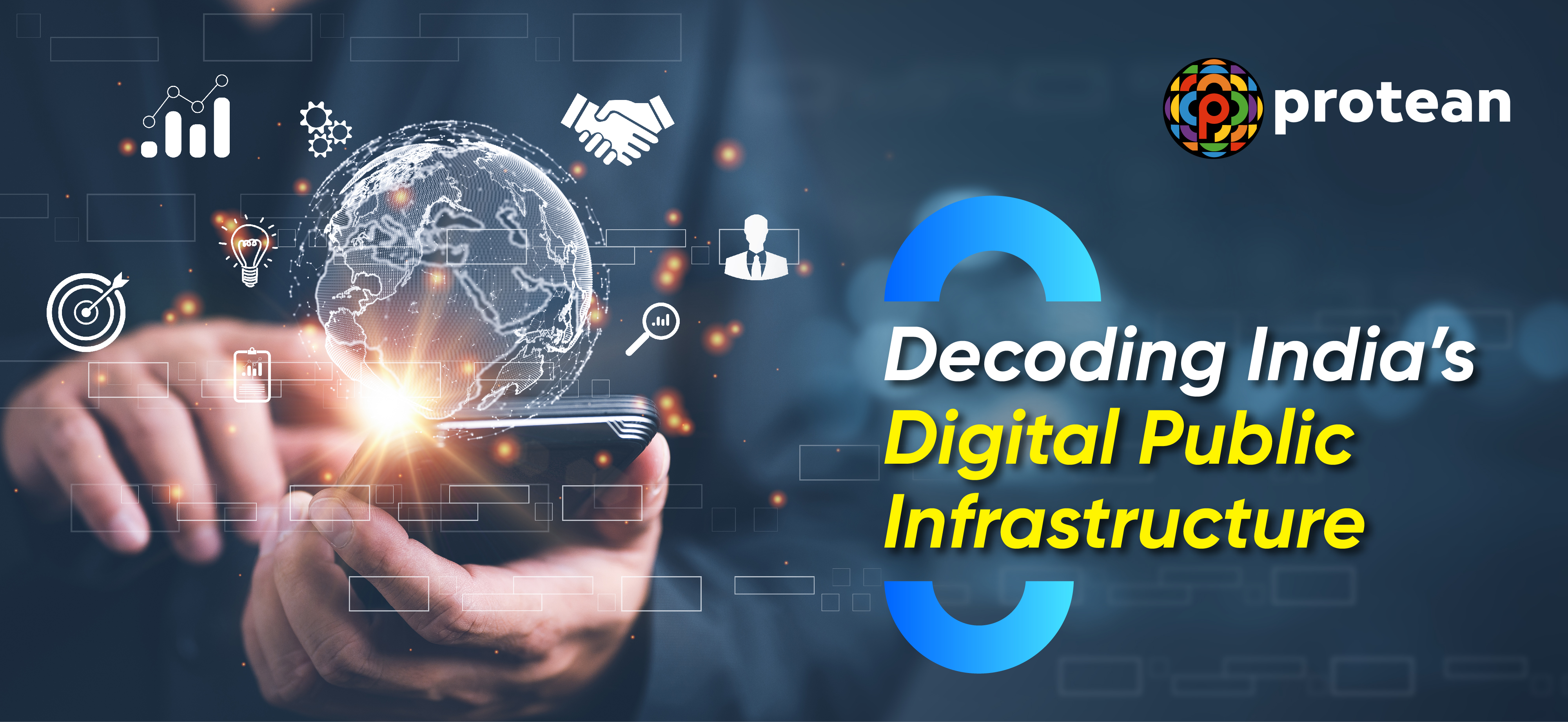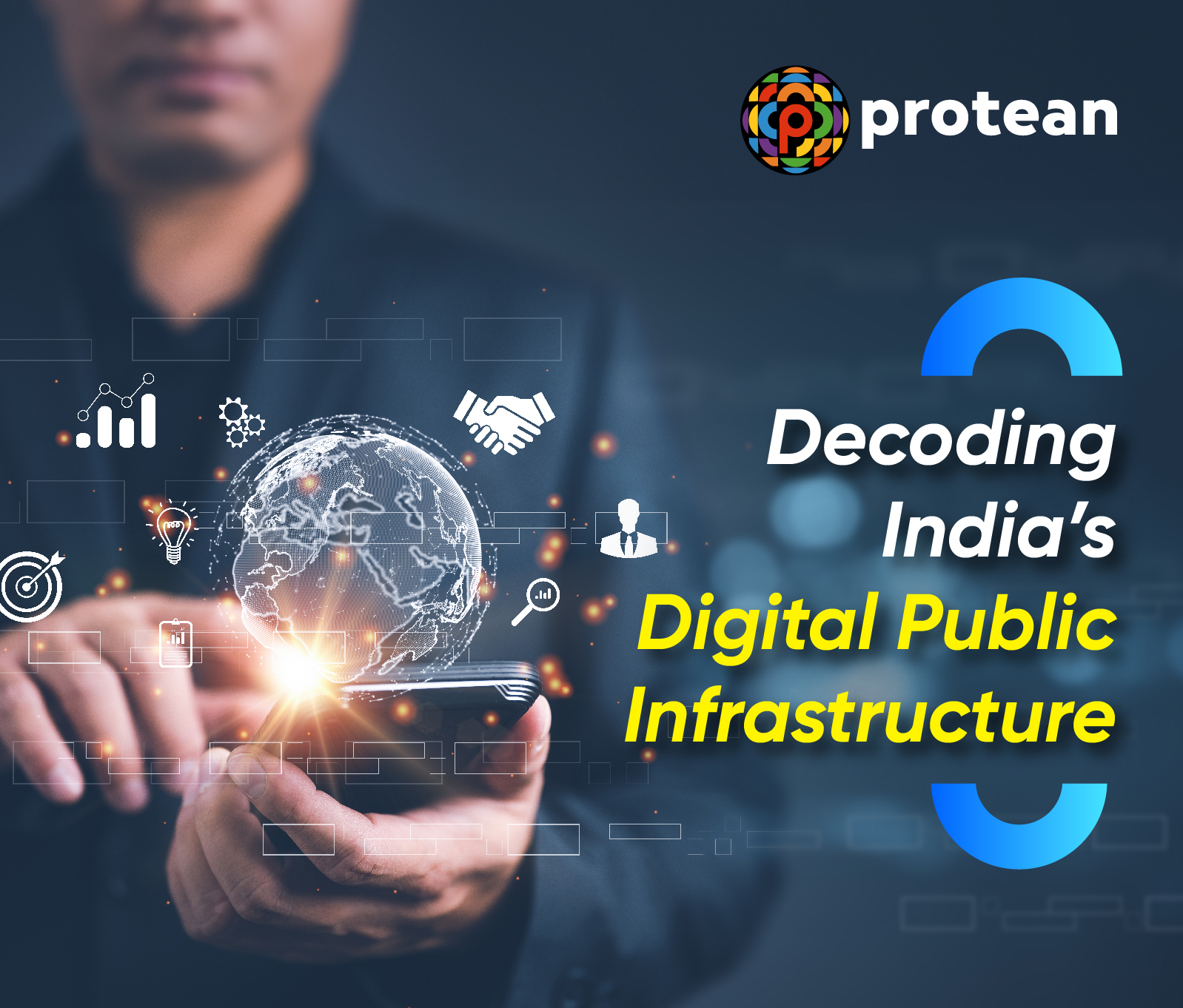Designing a reliable Digital Public Infrastructure is crucial for the government to meet their development goals and help the citizens to work and connect better. As societies increasingly rely on digital systems and services, DPIs play a pivotal role in shaping the way citizens work, connect, and interact with the government. Like real roads and bridges help to move things and people, DPIs make the digital paths that support how a country's digital world works.
India is the global leader in DPI and uses it to implement digital payments and e-commerce growth. In the recently concluded G20 summit, India emphasised investing in Digital Public Infrastructure (DPIs). Read along to learn the key elements of DPIs, the benefits and challenges of DPIs for India and how the government can improve its framework in India.
What Are the Key Elements for Digital Public Infrastructure?
Here are the key elements that help in managing Digital Public Infrastructure:
1. Digital IDs
It provides individuals with an authenticated unique digital identifier, which helps them open bank accounts, access social services and avail health insurance. Digital IDs assist individuals in accessing the basic services that they were not allowed to gain access to before.
It includes a wide range of processes, services and technologies to authenticate and validate the identification of the users in digital interactions and transactions.
2. Payments
Payments refer to the secure and efficient way of transferring financial values between stakeholders, including individuals, government entities and businesses. It comprises a range of digital payment systems and methods which enable seamless transactions by facilitating money exchange via various digital channels and platforms.
DPI helps create an inclusive and reliable payment ecosystem to conduct transactions conveniently. It also helps with deploying and accessing new financial services across the communities. For instance, India’s UPI carried out eight billion transactions worth approximately $200 billion in January 2023.
3. Data Exchange
It refers to the smooth and secure flow of data and information across private and government sector entities. Data exchange enables users to share their data across various platforms and applications to gain access to services. It involves a seamless sharing of data with privacy regulations and data protection.
Data exchange aims to create an accountable and transparent system which allows individuals to share their information security with authorised entities. It also enhances decision-making processes and supports an efficient delivery of service.
What are the Benefits of Digital Public Infrastructure for India?
Digital Public Infrastructure creates a secure, inclusive, efficient and transparent digital ecosystem for individuals. It promotes improved decision-making, innovation and trust.
The following are some of the benefits of DPIs for India:
1. Seamless Delivery of Service
DPIs enhance the delivery of public services as the elements create an interface with one another to create an ecosystem. It improves public services delivery, like healthcare, governance and education. For instance, the system of Aadhaar provides a unique digital identity to more than 1.4 billion, which enables them to avail various schemes and subsidies of the government.
2. Promotes Digital Economy
The DPIs promote a more accessible and equitable digital economy through its Digital India initiative. It provides all necessary services to the citizens electronically through its improved online infrastructure, empowering India in the field of technology. For instance, UPIs enable citizens to do financial transactions digitally and instantly.
3. Improves the Efficiency of Services
Digital Public Infrastructure enhances the efficiency of services, as it reduces time and effort by automating and simplifying the process. It enables citizens to use online platforms to avail of government services without the need to visit government offices. For instance, individuals can use Protean’s e-governance services to apply for a PAN card or Tax Information Network (TIN).
4. Increases Transparency of Services
Through the initiatives of DPIs, citizens can access information and data related to them as it improves transparency in the delivery of services. The data exchange element of DPIs creates a transparent system for individuals while keeping their data safe. For instance, individuals can use online portals to check their transactions and applications for government services.
5. Secures Online Transactions
The Digital Public Infrastructure of India provides a secure platform for online transactions. It helps individuals by securing their data and ensuring its integrity. For instance, individuals can use certain communication channels, digital signatures, mobile wallets and other digital payment platforms to secure their transactions and maintain confidentiality.
6. Reduces Transaction Costs
Apart from secure transactions, Digital Public Infrastructure lowers transaction costs in contrast to traditional methods. It helps businesses and governments reduce operational costs and channel the amount into other activities. For instance, Jio onboarded 100 million customers on its network within six months of launch as a mobile network provider using the eKYC system, saving the cost of physical verification.
7. Enhances Agricultural Practices
Through Digital Public Infrastructure, farmers get real-time information about market prices, weather and best agricultural practices. It helps them to make well-informed decisions and improve their agricultural productivity. In addition, it also helps in promoting the efficient use of water resources and improving the fertility and quality of soil.
What are the Challenges of Digital Public Infrastructure in India?
As with physical infrastructure, building strong digital public infrastructures is essential to India's growth. India understands how important it is to promote digital payments and push the expansion of e-commerce, as they lead the world in DPI. To operate and communicate with the government in a smooth manner, citizens need to use Digital Public Interfaces. Yet, DPIs have technical drawbacks in addition to their benefits. Cybersecurity risks have the ability to interrupt public services by endangering sensitive data and transactions.
In rural areas or among the homeless, the digital gap still exists, making access difficult. Due to gaps in digital literacy, some residents are unable to make full use of Digital India services, and data privacy concerns develop as a result of the infrastructure handling massive volumes of data. It is imperative that these issues be resolved to guarantee the equitable and safe expansion of India’s digital landscape.
How Can India Improve its Digital Public Infrastructure?
To improve the Digital Public Infrastructure of India, the government can implement the following points:
1. Expand the Infrastructure
The government must focus on expanding internet connectivity to rural and remote areas so that all citizens can access the services. They must also ensure that access to the internet is affordable by lowering the cost of data plans. In addition, the government must maintain and upgrade the infrastructure to adapt to the technological changes.
2. Improve Digital Literacy
Another way to improve the Digital Public Infrastructure is by integrating digital literacy and computer education at the school level to make sure that future generations have proper digital knowledge and skills. The government can even introduce digital literacy training programs for adults to educate them about Digital Public Infrastructure and how to use its services.
3. Measures Against Cyber Threats
Implementing advanced-level threat detection systems can prevent cyber threats. It can be done using machine learning and artificial intelligence that detects and responds to cyber threats in real time. The government can also launch awareness programs to educate all citizens about online risks and the importance of protecting their digital identities.
4. Update Technology Regularly
Updating and using emerging technologies, like 5G, artificial intelligence and blockchain improves the DPIs’ capabilities and helps the citizens fulfil their needs. Through regular upgrades, the government can ensure the system’s overall security is intact and address any issues. In addition, seeking feedback from citizens helps identify areas for improvement of the Digital Public Infrastructure and adapt accordingly.
5. Collaborate with Other Entities
Supporting Public-Private Partnership (PPPs) accelerates the development, expansion and maintenance of the infrastructure of DPIs like the Digital India initiative. The involvement of private entities in DPIs’ infrastructure can bring funding, expertise and innovation to the system. It will also help manage the data exchange and protect from cyber threats. For instance, citizens can apply for a PAN card or sign a document digitally via Protean eGov Technologies Ltd.
Final Takeaway
Hence, India’s Digital Public Infrastructure is a key component of modern administration. It helps the citizens to access and secure all their basic data. India has made significant progress when it comes to Digital Public Infrastructure. However, if the government implements the points mentioned above, the DPI for India will improve, benefiting both the government and its citizens.
FAQs on Digital Public Infrastructure
1. What does India’s Digital Public Infrastructure consist of?
India’s Digital Public Infrastructure mainly consists of India Stack. Through India Stack, India became the first country to develop and implement all three elements of DPIs. It works with a partnership between the government, regulators, private sector, volunteers and startups.
2. How does digital payment benefit the government?
Digital payments increase the transparency in the government system. It ensures that there is no leakage and fake recipient. The money is directly transferred to the beneficiary’s account via various digital payment modes.
3. How does data management play an important role in India’s DPI?
Data management ensures that all information is authentic and no one can misuse or access another person’s information. The Government of India introduced DigiLocker which will help citizens to access all their information, such as tax details, educational certificates, vaccine certificates and more.
- Story by Kakoli Laha

